#louis ferdinand of prussia
Text

Kira Kirillovna with her husband Louis Ferdinand of Prussia and his grandfather, Kaiser Wilhelm.
#romanov#vladimirovichi#kira kirillovna#kyra kyrillovna#louis ferdinand of prussia#kaiser wilhelm ii#my collection
64 notes
·
View notes
Text
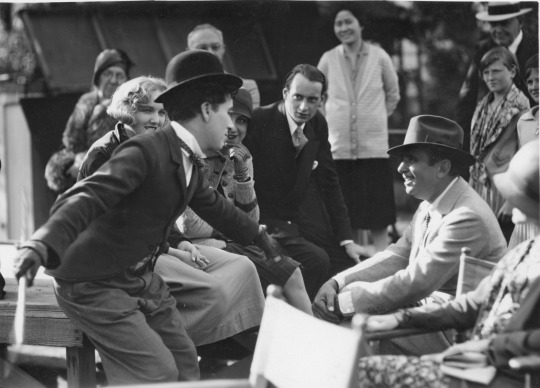

Charlie Chaplin, Douglas Fairbanks and a visiting Prince Louis Ferdinand of Prussia to set of “City Lights”. Top photo to Charlie's left is Virginia Cherrill (blind flower girls).
Prince Louis’ grandfather was Kaiser Wilhelm II and great-grandmother Queen Victoria.
#charlie chaplin#douglas fairbanks#prince louis ferdinand of prussia#set of “city lights”#circa 1929#virginia cherrill
17 notes
·
View notes
Photo

Portrait of Prince Louis Ferdinand of Prussia (1772-1806) by Anton-Karoly Maxiliem Mosnier.
Louis Ferdinand was the third son of Prince August Ferdinand of Prussia and his wife, Elisabeth Louise of Brandenburg-Schwedt (1738-1820), and thus the nephew of King Frederick II the Great.
He possessed great musical talent and was considered a great pianist. He was one of the regulars in the salon of Rahel Varnhagen von Ense, where he used to play the piano for the other guests.
#Anton-Karoly Maxiliem Mosnier#Preußen#haus hohenzollern#prince louis ferdinand of prussia#german aristocracy#kingdom of prussia
15 notes
·
View notes
Photo

#Prince Wilhelm of Prussia#Prince Louis Ferdinand of Prussia#Prince Friedrich of Prussia#1910s#hohenzollern#prussian royal family
7 notes
·
View notes
Text
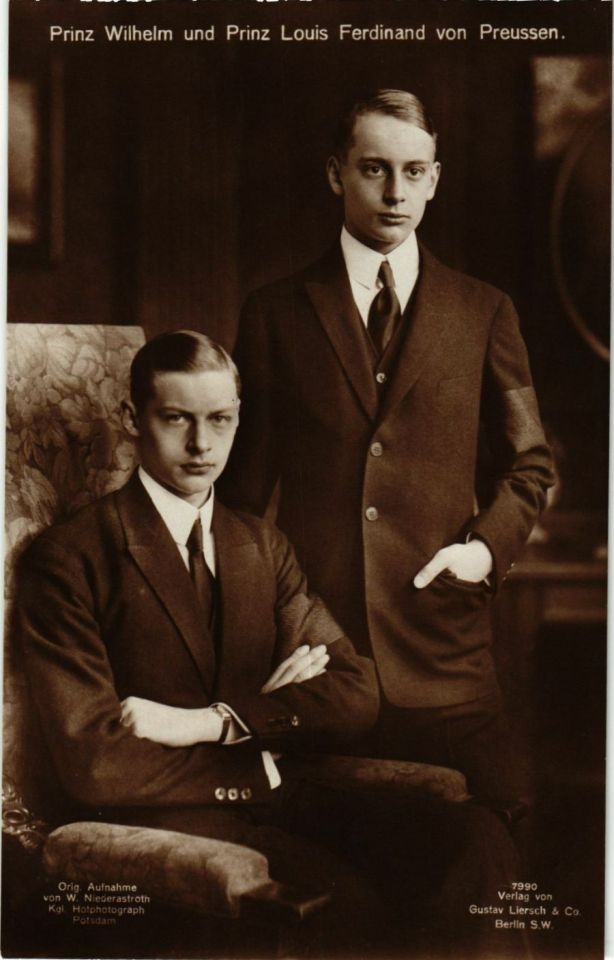
Prince Wilhelm Friedrich Franz Joseph Christian Olaf of Prussia and Prince Louis Ferdinand Victor Eduard Adalbert Michael Hubertus of Prussia
German vintage postcard
#tarjeta#prince wilhelm friedrich franz joseph christian olaf#postkaart#german#adalbert#sepia#prince louis ferdinand#prussia#wilhelm#historic#franz#ferdinand#michael hubertus#photo#eduard#olaf#postal#briefkaart#michael#friedrich#photography#prince#victor#christian#vintage#ephemera#ansichtskarte#old#postcard#hubertus
1 note
·
View note
Text

louis ferdinand, prince of prussia
0 notes
Text
The updated list of nominees so far:
France:
Jean Lannes
Josephine de Beauharnais
Thérésa Tallien
Jean-Andoche Junot
Joseph Fouché
Charles Maurice de Talleyrand
Joachim Murat
Michel Ney
Jean-Baptiste Bernadotte (Charles XIV of Sweden)
Louis-Francois Lejeune
Pierre Jacques Étienne Cambrinne
Napoleon I
Marshal Louis-Gabriel Suchet
Jacques de Trobriand
Jean de dieu soult.
François-Étienne-Christophe Kellermann
Louis Davout
Pauline Bonaparte, Duchess of Guastalla
Eugène de Beauharnais
Jean-Baptiste Bessières
Antoine-Jean Gros
Jérôme Bonaparte
Andre Masséna
England:
Richard Sharpe (The Sharpe Series)
Tom Pullings (Master and Commander)
Arthur Wellesley, 1st Duke of Wellington
Jonathan Strange (Jonathan Strange & Mr. Norrell)
Captain Jack Aubrey (Aubrey/Maturin books)
Horatio Hornblower (the Hornblower Books)
William Laurence (The Temeraire Series)
Austria:
Klemens von Metternich
Friedrich Bianchi, Duke of Casalanza
Franz I/II
Archduke Karl
Marie Louise
Poland:
Wincenty Krasiński
Józef Antoni Poniatowski
Józef Zajączek
Maria Walewska
Russia:
Alexander I Pavlovich
Alexander Andreevich Durov
Prince Andrei (War and Peace)
Pyotr Bagration
Mikhail Miloradovich
Levin August von Bennigsen
Prussia:
Louise von Mecklenburg-Strelitz
Gebard von Blücher
Carl von Clausewitz
Frederick William III
Gerhard von Scharnhorst
Louis Ferdinand of Prussia
Friederike of Mecklenburg-Strelitz
The Netherlands:
Ida St Elme
Wiliam, Prince of Orange
The Papal States:
Pius VII
#napoleonic sexyman tournament#there is something mildly funny about the English being overwhelmingly fictional Englishmen#and Wellington
54 notes
·
View notes
Text
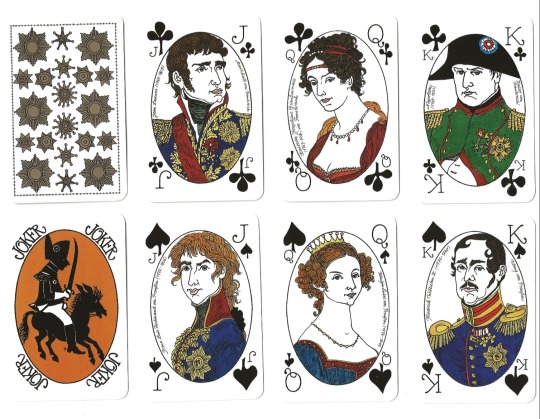

Glaux Verlag Christine Jäger [German publishing house that was based in Jena at the time these were made] Napoleonic Playing Cards
♣️: Marshal Lannes, Empress Josephine, Napoleon
♠️: Prince Louis-Ferdinand of Prussia, Queen Louise, Frederick-William III
♥️: Marshal Kutuzov, Tsarina Elizabeth-Alexeievna, Tsar Alexander I
♦️: Prince Frederick-Louis of Hohenlohe, Princess Louise of Hesse-Darmstadt, Duke Karl August Grand Duke of Saxe-Weimar-Eisenach
#they got the tsarina’s birth year wrong lol#my napoleonic playing cards#tsar alexander#napoleon bonparte#empress josephine#marshal lannes
27 notes
·
View notes
Text

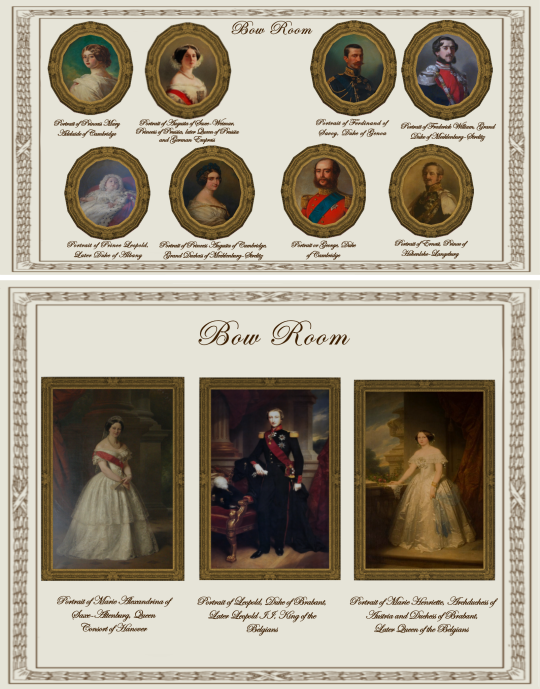
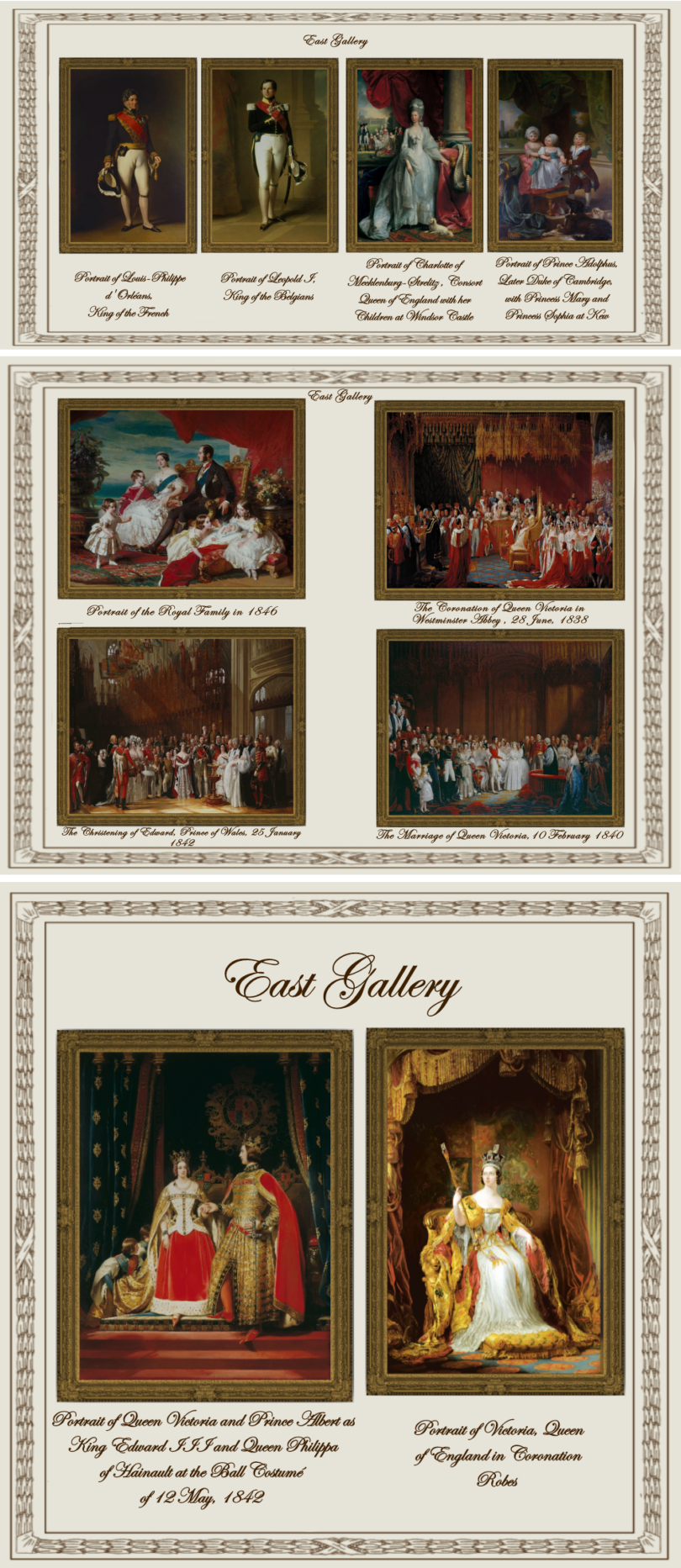
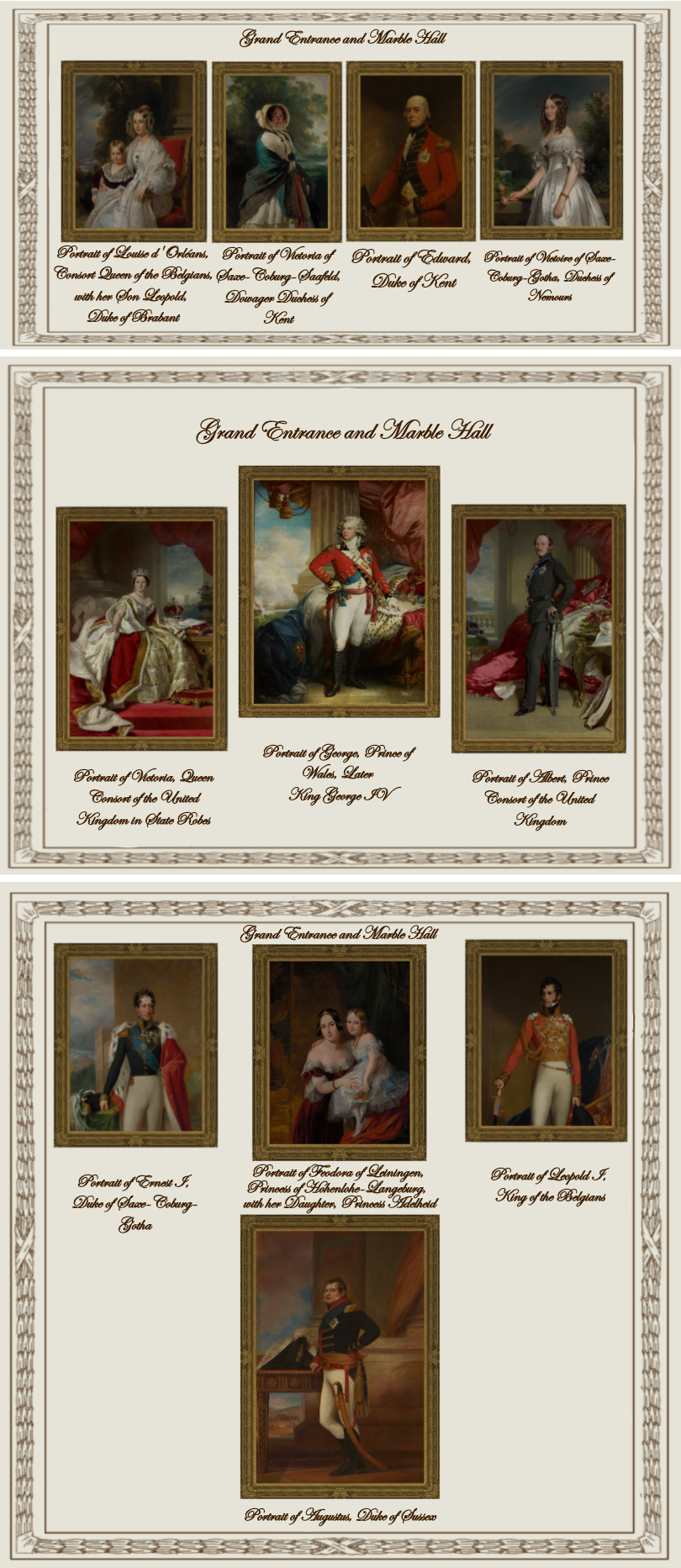

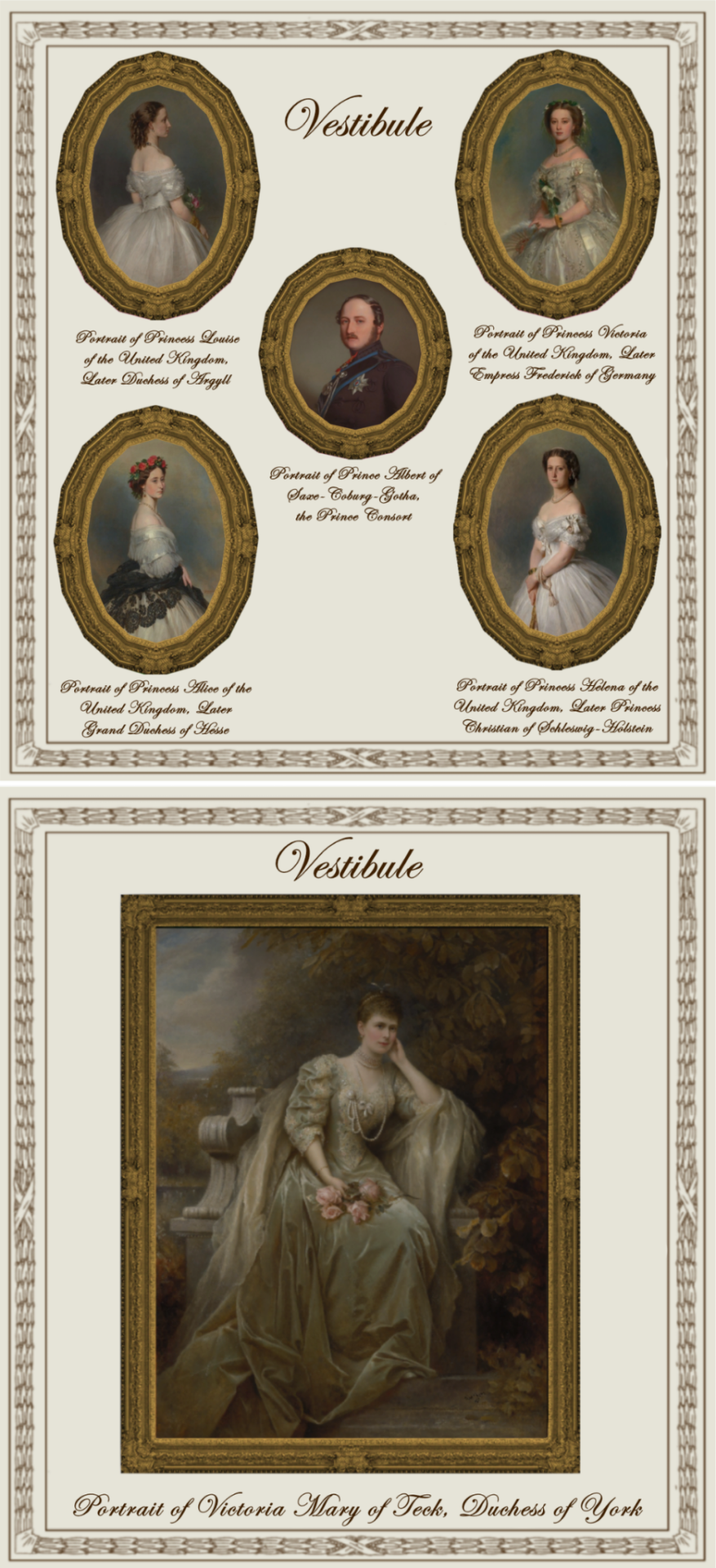


Paintings from Buckingham Palace: part II
A retexture by La Comtesse Zouboff — Original Mesh by @thejim07
Spread among 13 occupied and historic royal residences in the United Kingdom, the collection is owned by King Charles III and overseen by the Royal Collection Trust. The British monarch owns some of the collection in right of the Crown and some as a private individual. It is made up of over one million objects, including 7,000 paintings, over 150,000 works on paper, this including 30,000 watercolours and drawings, and about 450,000 photographs, as well as around 700,000 works of art, including tapestries, furniture, ceramics, textiles, carriages, weapons, armour, jewellery, clocks, musical instruments, tableware, plants, manuscripts, books, and sculptures.
Some of the buildings which house the collection, such as Hampton Court Palace, are open to the public and not lived in by the Royal Family, whilst others, such as Windsor Castle, Kensington Palace and the most remarkable of them, Buckingham Palace are both residences and open to the public.
About 3,000 objects are on loan to museums throughout the world, and many others are lent on a temporary basis to exhibitions.
-------------------------------------------------------
The second part includes paintings displayed in the Ball Supper Room, the Ballroom, the Ballroom Annexe, the Bow Room, the East Gallery, the Grand Entrance and Marble Hall, the Minister's Landing & Staircase, the Vestibule, the Chinese Dining Room and the Balcony Room.
This set contains 57 paintings and tapestries with the original frame swatches, fully recolourable. They are:
Ball Supper Room (BSR):
Portrait of King George III of the United Kingdom (Benjamin West)
Ballroom (BR):
The Story of Jason: The Battle of the Soldiers born of The Serpent's Teeth (the Gobelins)
The Story of Jason: Medea Departs for Athens after Setting Fire to Corinth (the Gobelins)
Ballroom Annexe (BAX):
The Apotheosis of Prince Octavius (Benjamin West)
Bow Room (BWR):
Portrait of Princess Mary Adelaide of Cambridge (William Corden the Younger)
Portrait of Princess Augusta of Cambridge, Grand Duchess of Mecklenburg-Strelitz (Alexander Melville)
Portrait or George, Duke of Cambridge (William Corden the Younger)
Portrait of Frederick William, Grand Duke of Mecklenburg-Strelitz (Franz Xaver Winterhalter)
Portrait of Augusta of Saxe-Weimar, Princess of Prussia, later Queen of Prussia and German Empress (Franz Xaver Winterhalter)
Portrait of Prince Leopold, Later Duke of Albany (Franz Xaver Winterhalter)
Portrait of Ernest, Prince of Hohenlohe-Langeburg (Franz Xaver Winterhalter)
Portrait of Ferdinand of Savoy, Duke of Genoa (Eliseo Sala)
Portrait of Marie Alexandrina of Saxe-Altenburg, Queen Consort of Hanover (Carl Ferdinand Sohn)
Portrait of Leopold, Duke of Brabant, Later Leopold II, King of the Belgians (Nicaise de Keyser)
Portrait of Marie Henriette, Archduchess of Austria and Duchess of Brabant, Later Queen of the Belgians (Nicaise de Keyser)
East Gallery (EG):
Portrait of Leopold I, King of the Belgians (Franz Xaver Winterhalter)
Portrait of Victoria, Queen of England in Coronation Robes (Sir George Hayter)
Portrait of Louis-Philippe d'Orléans, King of the French (Franz Xaver Winterhalter)
Portrait of Charlotte of Mecklenburg-Strelitz, Consort Queen of England with her Children at Windsor Castle (Benjamin West)
Portrait of Prince Adolphus, later Duke of Cambridge, With Princess Mary and Princess Sophia at Kew (Benjamin West)
The Coronation of Queen Victoria in Westminster Abbey, 28 June, 1838. (Sir George Hayter)
The Christening of Edward, Prince of Wales 25 January, 1842 (Sir George Hayter)
The Marriage of Queen Victoria, 10 February, 1840 (Sir George Hayter)
Portrait of the Royal Family in 1846 (Franz Xaver Winterhalter)
Portrait of Queen Victoria and Prince Albert as King Edward III and Queen Philippa of Hainault at the Ball Costumé of 12 May, 1842 (Sir Edwin Landseer)
Grand Entrance and Marble Hall (GEMH):
Portrait of Edward, Duke of Kent (John Hoppner)
Portrait of Ernest I, Duke of Saxe-Coburg-Gotha (George Dawe)
Portrait of Victoria of Saxe-Coburg-Saafeld, Dowager Duchess of Kent (Franz Xaver Winterhalter)
Portrait of Albert, Prince Consort of the United Kingdom (Franz Xaver Winterhalter)
Portrait of Victoria, Queen Consort of the United Kingdom in State Robes (Franz Xaver Winterhalter)
Portrait of Louise d'Orléans, Consort Queen of the Belgians, with her Son Leopold, Duke of Brabant (Franz Xaver Winterhalter)
Portrait of Feodora of Leiningen, Princess of Hohenlohe-Langeburg, with her Daughter, Princess Adelheid (Sir George Hayter)
Portrait of George, Prince of Wales, Later King George IV (Mather Byles Brown)
Portrait of Victoire of Saxe-Coburg-Gotha, Duchess of Nemours (Franz Xaver Winterhalter)
Portrait of Augustus, Duke of Sussex (Domenico Pellegrini)
Portrait of Leopold I, King of the Belgians (William Corden the Younger)
Minister's Landing and Staircase (MLS):
Portrait of George, Prince of Wales in Garther Robes (John Hoppner)
The Loves of the Gods: The Rape of Europa (the Gobelins)
The Loves of the Gods: The Rape of Proserpine (The Gobelins)
Vestibule (VL):
Portrait of Prince Albert of Saxe-Coburg-Gotha, the Prince Consort (Unknown Artist from the German School)
Portrait of Princess Alice of the United Kingdom, Later Grand Duchess of Hesse (Franz Xaver Winterhalter)
Portrait of Princess Helena of the United Kingdom, Later Princess Christian of Schleswig-Holstein (Franz Xaver Winterhalter)
Portrait of Princess Louise of the United Kingdom, Later Duchess of Argyll (Franz Xaver Winterhalter)
Portrait of Princess Victoria of the United Kingdom, Later Empress Frederick of Germany (Franz Xaver Winterhalter)
Portrait of Victoria Mary of Teck, Duchess of York (Edward Hughes)
Chinese Dining Room or Pavilion Breakfast Room(CDR):
Set of Four Painted Chinoiserie Wall panels I (Robert Jones)
Set of Four Painted Chinoiserie Wall panels II (Robert Jones)
Set of Four Painted Chinoiserie Wall panels III (Robert Jones)
Set of Four Painted Chinoiserie Wall panels IV (Robert Jones)
Balcony Room or Centre Room (BR):
Chinoiserie Painted Panel I (Robert Jones)
Chinoiserie Painted Panel II (Robert Jones)
Chinoiserie Painted Panel III (Robert Jones)
Chinoiserie Painted Panel IV (Robert Jones)
EXTRAS! (E):
I decided to add the rest of the tapestries from the story of Jason (wich hangs in the Grand Reception Room at Windsor Castle) and (with Jim's permission) added the original mesh for paintings number 2,3,4 & 5 from the Vestibule (seen here and here) wich was never published. These items are:
The Story of Jason: Jason Pledges his Faith to Medea (the Gobelins)
The Story of Jason: Jason Marries Glauce, Daughter of Creon, King of Thebes (the Gobelins)
The Story of Jason: The Capture of the Golden Fleece (the Gobelins)
The Story of Jason: The Poisoning of Glauce and Creon by Medea's Magic Robe (the Gobelins)
Sea Melodies (Herbert James Draper) (made by TheJim07)
-------------------------------------------------------
Found under decor > paintings for:
500§ (BWR: 1,2,3,4,5,6, & 8 |VL: 1)
570§ (VL: 2,3,4 & 5 |E: 5)
1850§ (GEMH: 1 & 3)
2090§ (GEMH: 2,6,7, 9 & 11)
3560§ (GEMH: 4,5 & 10 |BSR: 1 |EG: 1,2,3,4 & 5 |MLS: 1 |BAX: 1)
3900§ (CDR: 1,2,3 & 4 |BR: 1,2,3 & 4 |EG: 10 |VL: 6 |GEMH: 8)
4470§ (MLS: 2 |E: 1)
6520§ (BR 1 & 2| MLS: 3 |EG: 6,7,8 & 9 |BR: 1 & 2 |E: 2,3 & 4)
Retextured from:
"Saint Mary Magdalene" (BWR: 1,2,3,4,5,6, & 8 |VL: 1) found here.
"Sea Melodies" (VL: 2,3,4 & 5 |E: 5)
"The virgin of the Rosary" (GEMH: 1 & 3) found here.
"Length Portrait of Mrs.D" (GEMH: 4,5 & 10 |BSR: 1 |EG: 1,2,3,4 & 5 |MLS: 1 |BAX: 1) found here
"Portrait of Maria Theresa of Austria and her Son, le Grand Dauphin" (CDR: 1,2,3 & 4 |BR: 1,2,3 & 4 |EG: 10 |VL: 6 |GEMH: 8) found here
"Sacrifice to Jupiter" (MLS: 2 |E: 1) found here
"Vulcan's Forge" (BR 1 & 2| MLS: 3 |EG: 6,7,8 & 9 |BR: 1 & 2 |E: 2,3 & 4) found here
(you can just search for "Buckingham Palace" using the catalog search mod to find the entire set much easier!)
Disclaimer!
Some paintings in the previews look blurry but in the game they're very high definition, it's just because I had to add multiple preview pictures in one picture to be able to upload them all! Also sizes shown in previews are not accurate to the objects' actual sizes in most cases.
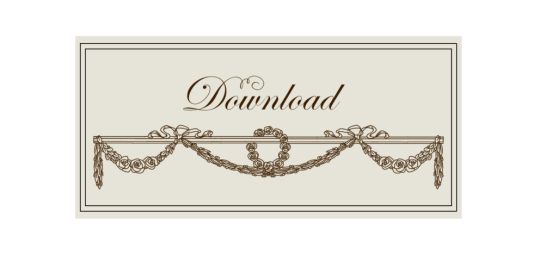
Drive
(Sims3pack | Package)
(Useful tags below)
@joojconverts @ts3history @ts3historicalccfinds @deniisu-sims @katsujiiccfinds @gifappels-stuff
-------------------------------------------------------
#the sims 3#ts3#sims 3#s3cc#sims 3 cc#sims 3 download#sims 3 decor#edwardian#victorian#regency#georgian#buckingham#buckingham palace#wall decor#sims 3 free cc#large pack#this was exhausting
48 notes
·
View notes
Text

Hero's death of Prince Louis Ferdinand of Prussia at Saalfeld on 10 October 1806. Richard Knötel (1857-1914).
A tragic loss to the world, he was a great musician and composer.
youtube
#Music#classical music#Prince Louis Ferdinand#Prussian composers#music during Napoleonic era#I've posted about him before
13 notes
·
View notes
Text
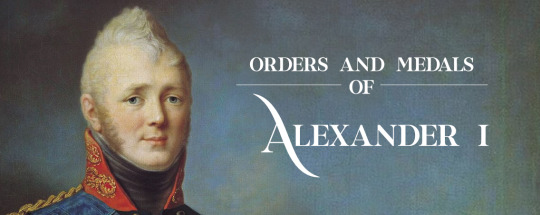





Orders and Medals → ᴇᴍᴘᴇʀᴏʀ ᴀʟᴇxᴀɴᴅᴇʀ ɪ
Emperor Alexander I of Russia, was recorded to have been a recipient of thirty awards. Eight nationals: Order of Saint Andrew, Order of Saint Alexander Nevsky, Order of Saint Anna, Order of Saint John Jerusalem, Order of the Saint George, Order of the White Eagle, Order of Saint Stanislaus, and Order of Virtuti Militari. And twenty-two foreign: Military Order of Maria Therese (Austria), Army Cross 1813/14 (Austria), Order of Saint Hubert (Bavaria), Order of Fidelity (Baden), Order of the Garter (United Kingdom), Order of the Württemberg Crown (Württemberg), Order of Military Merit (Württemberg), Order of the Elephant (Denmark), Order of the Golden Fleece (Spain), Military Order of William (The Netherlands), Order of Saint Janarius (Naples), Neapolitan Constantine Order of Saint George (Naples), Neapolitan Order of Saint Ferdinand and Merit (Naples and Sicily), Sash Order of the Three Order (Portugal), Order of Tower and Sword (Portugal), Iron Cross (Prussia), Order of the Red Eagle (Prussia), Order of the Black Eagle (Prussia), 1813 Campaign Medal (Prussia), Order of the White Falcon (Saxe-Weimar-Eisenach), Supreme Order of the Holy Annunciation (Italy), Legion of Honour (France), Order of Our Lady of Carmel and Saint Lazarus of Jerusalem (France), Order of the Holy Spirit (France), Order of Saint Louis (France), Order of Saint Seraphim (Sweden), and Order of the Sword (Sweden).
19 notes
·
View notes
Photo

Kira Kirillovna with her husband and “a cousin.”
The caption of this press photo refers to the second woman as Kira’s “cousin Princess Vasili.” The photo was taken on a trip by Kira and her husband Louis Ferdinand to California. The woman is not actually Kira’s cousin, but the wife of a second cousin, Prince Vasili Alexandrovich. Born Princess Natalia Alexandrovna Golitsyna, she married Vasili in 1931, and the couple moved to California in 1934. They would have one daughter, Princess Marina Vasilievna, in 1940.
#romanov#press photo#kira kirillovna#natalia golitsyna#louis ferdinand of prussia#vladimirovichi#mikhailovichi#my collection
15 notes
·
View notes
Text
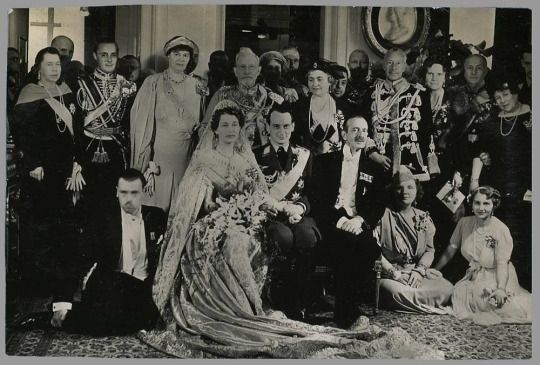
✵ May 4, 1938 ✵
Grand Duchess Kira Kirillovna of Russia & Prince Louis Ferdinand of Prussia
9 notes
·
View notes
Text
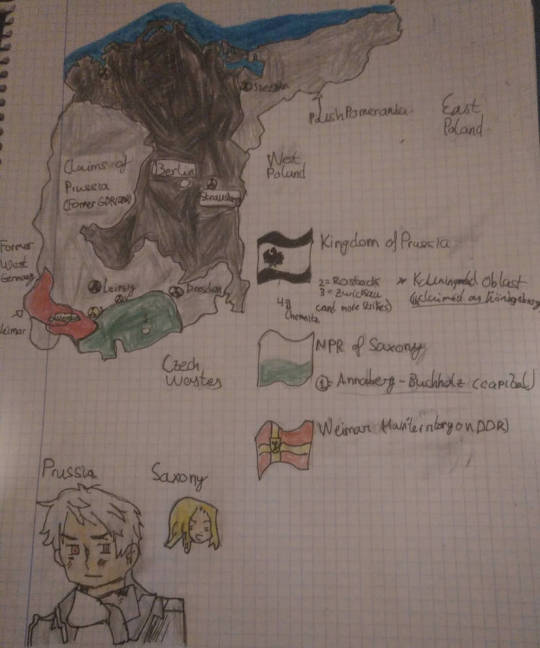
The Kingdom of Prussia is a German survivor nation located in northern Germany along the coast of the Baltic Sea.
Doomsday and World War III
Due to its unique circumstances being split between Allied and Soviet forces, Berlin managed to survive better than most major cities. During World War III, both the Soviet and Allied leadership believed the city could be captured, and with significant resources invested by both sides, it was not struck by nukes.
-100kt strikes-
•Altenburg
•Chemnitz
•Damgarten
•Dranske
•Dresden
•Fürstenberg/Havel
•Groß Dölln
•Halle
•Leipzig
•Magdeburg
•Parchim
•Peenemünde
•Rechlin
•Rostock
•Strausberg
•Wünsdorf
•Zerbst
•Zwickau
•Zossen
-10kt strikes-
-Bitterfeld chemical industry complex
-Goitzsche brown-coal open cast mine
-Görlitz brown-coal open cast mine
-Nochten brown-coal open cast mine
-Cottbus Air Base\Flugplatz Cottbus-Nord Airport
-Jüterbog's Soviet army base
-Soviet Jüterbog Airfield\Altes Lager airfield
-Soviet Altenburg Airfield.
--The aftermath--
By the time the situation was fully realized, the leadership of the Soviets and the Allies had been destroyed and a nuclear attack could not be authorized for the city. With East German military leadership crippled by strikes on Moscow and Strausberg, East Berlin soon fell into chaos. After several days of rioting and fighting in the streets between citizens and Soviet/East German troops, the citizens eventually gained the upper hand and the troops surrendered. Before the the imprisoned Soviet troops could be executed, the allied forces in West Berlin intervened with the Berlin Wall border stations unmanned. Knowing the coming situation would require as many trained troops as possible, many of the East German and Soviet troops were distributed amongst allied units.
Christian-Sigismund, member of the former royal family of Prussia and last surviving heir of the house of Hohenzollern, after fallout in Potsdam killed his father Louis Ferdinand and nephew Georg Fredrich, was imprisoned in East Berlin at the time. Although reasons for this remain unknown it was likely due to his heritage and high status. He became a rallying figure for many of the German people, a symbol of their old greatness before Nazism destroyed the country, and was forced into a leadership role he likely would rather not have had. He was instrumental in unifying the people of East and West Berlin in the days afterward and organizing civilian salvage teams for food and resources. Some people claims Königsberg and the Kaliningrad Oblast
(Map based on: www.deviantart.com/mdc01957/ar…)
-Saxony-
The Nationalist People's Republic of Saxony (Nationalistische Volksrepublik Sachsen) is a survivor nation based around Annaberg-Buchholz, a city in the south of former East Germany. It has declared itself the successor to the pre-DDR state of Saxony.
The southern region of East Germany was severely affected by the Doomsday attacks. Targets included Saxony's four largest cities, Chemnitz, Dresden, Leipzig, and Zwickau, along with the Soviet air base at Altenburg.
-Weimar-
Weimar is a city-state in former East Germany controling most of the OTL German state of Thuringia.
2 notes
·
View notes
Text
Who is the worst?
Round 1: Benjamin Tallmadge vs Friedrich Wilhelm von Steuben
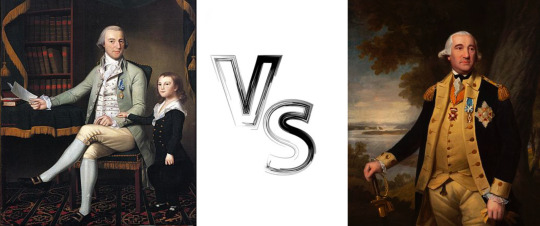
Benjamin Tallmadge (February 25, 1754 – March 7, 1835) was an American military officer, spymaster, and politician. He is best known for his service as an officer in the Continental Army during the American Revolutionary War. He acted as leader of the Culper Ring during the war, a celebrated network of spies in New York where major British forces were based. He also led a successful raid across Long Island that culminated in the Battle of Fort St. George. After the war, Tallmadge was elected to the US House of Representatives as a member of the Federalist Party.
In 1792, Tallmadge was appointed postmaster of Litchfield, Connecticut. He served until he resigned to assume his seat in Congress. He established a successful mercantile and importing business and was the first president of the Phoenix Branch Bank, a position he held from 1814 to 1826.
Over the course of his career, Tallmadge owned and hired a number of slaves, though he became an abolitionist after conversion to Congregationalism.
Friedrich Wilhelm August Heinrich Ferdinand von Steuben (born Friedrich Wilhelm Ludolf Gerhard Augustin Louis von Steuben; September 17, 1730 – November 28, 1794), also referred to as Baron von Steuben was a Prussian military officer who played a leading role in the American Revolutionary War by reforming the Continental Army into a disciplined and professional fighting force. His contributions marked a significant improvement in the performance of U.S. troops, and he is subsequently regarded as one of the fathers of the United States Army.
Upon the Count's recommendation, Steuben was introduced to future president George Washington by means of a letter from Franklin as a "Lieutenant General in the King of Prussia's service", an exaggeration of his actual credentials that appears to be based on a mistranslation of his service record. He was advanced travel funds and left Europe from Marseilles on Friday, September 26, 1777, on board the frigate Flamand.
#sorry this is a tough one#founding father bracket#worst founding father#founding fathers#amrev#brackets#polls#benjamin tallmadge#friedrich wilhelm von steuben#baron von steuben
8 notes
·
View notes
Text
“He won't get me”: some of the rejected suitors of Archduchess Elisabeth Marie
I am in a good mood so I decided to finish up this post that I had on my drafts since months ago, when I read the memoirs of Archduchess Erzsi's English governess. While I thought the memoirs itself were kinda dull I did find very interesting tidbits of information. Today I'll talk about two of her (alleged) suitors.
Erzsi, being the granddaughter of the Emperor and the only child of the late Crown Prince was considered a candidate for many princes, like her cousin Albert, future king of the Belgians. Other one was Prince Eitel Friedrich of Prussia, the second son of Emperor Wilhelm II.
After the review there was a grand gala dinner at the Hofburg, and I went with the Archduchess to watch the Royalties from the musicians' gallery over the banqueting hall. The table was gorgeous with gold plate, and I find I wrote my mother, in an account of the banquet : “Our dear Emperor has a splendid appetite. The German Emperor, who sees everything, noticed our Archduchess up in the gallery and asked who she was. Upon being told, he asked our Emperor that she might come down after dinner and be presented. She is certainly growing remarkably pretty.”
Evidently Emperor Wilhelm II. found her so, as later he sent his second son to visit the Austrian Court with the intention of making a matrimonial alliance between him and the Archduchess. But he counted without the Archduchess, for when she saw the youth, she exclaimed : “Marry that boy! Never!” and forthwith retired to bed, from whence she refused to emerge until His Imperial Highness had shaken the dust of the Austrian Court from his Royal shoes, and taken his departure.
The girl seemed to had a flavor for drama. The governess doesn't talk about this potential marriage again, but I was a still curious so I made a quick search to see if I could dig something more about the subject and I stumbled with this news article from 4 June 1890 published in The Toronto Daily Mail:
THE AUSTRIAN CROWN.
London Truth says:—The information given in a St. Petersburg paper about the possibility of the German Emperor's second son, Prince Eitel, being raised to the imperial throne of Austria is not wholly unfounded. But the condition would be marriage with the Archduchess Eizabeth. She is his senior, but the difference is not great enough to be disparity when both reach years of discretion (...) Both the Emperor and Empress of Austria hate to the degree of loathing the Archduchess Stephanie, who is as good (or bad) as excluded from their presence. “No more unnappy couple exist,” says to me a circus friend of the Empress, from whom she hides no grief. But their misery would be far deeper if he Archduchess Stephanie were to shine forth again as coming Empress through a marriage with the feeble-brained heir-presumptive to the throne. Such a marriage would probably secure the succession to a child of Stephanie. Were Elizabeth declared heiress, as Maria Theresa was, with the support of William II., with the understanding that she was to marry his son, and were, by this arrangement, the sons of the Archduke Charles Louis to be cut out, Francis Joseph and the Empress Elizabeth would die happy.
First of all, the age gap between Eitel and Erzsi was... two months. In his favor. So already we can tell this article doesn't have the best sources. However it also tells us that at least the rumor of this union existed even years before the governess started working at court.
While there was speculation about the succesion after Rudolf's death, and his daughter's name came forward, there never seemed to have been a serious effort of naming her heiress (there was however an attempt to remarry Stephanie to archduke Franz Ferdinand... actual crackshipping); Franz Josef, always the traditionalist, preferred to name as heir the nephew he barely standed that to bend the succesion laws in favor of the girl that was his favorite grandchild. So this engagement seems to be more wishful thinking for people that hoped for the unification of Germany and Austria rather than a serious plan; perhaps Wilhelm did thought his son had a chance with the archduchess, but I doubt that Franz Josef would've liked to give his empire to the Germans in a silver plate. In any case, Erzsi's reaction to the prince ended this project before it even begun.
The other potential bridegroom only gets marginally mentioned in a letter from the governess to a friend of hers. The Governess doesn't date this letter but given the context it is from early May of 1898:
The Archduchess wishes me to assure you she is not fianceed with the King of Spain. Her expression is: “He won't get me;” and I don't think he will.
He didn't got her.
Again a very quick search made me came across with several news articles published in January/February 1898 that announced the engagement of the fifteen-years-old Erzsi with the twelve-years-old King Alfonso XIII of Spain. And again, this really seem to be nothing but rumors. I know nothing about Alfonso but I doubt there was any serious attempt to get him a bride while he was still a literal child; by the time he had reached majority, Erzsi was already married.
And that is all I have for today on this subject; If anyone has any information (specially if it's from better sources that memoirs published almost two decades after the events happened and gossipy news articles) about this potential unions please tell me!
#archduchess elisabeth marie of austria#prince eitel friedrich of prussia#alfonso XIII of spain#recollections of a royal governess
11 notes
·
View notes